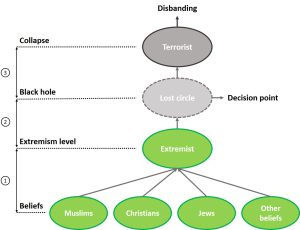 “Are You to Provide Fertile Ground for a Coalition?”
“Are You to Provide Fertile Ground for a Coalition?”
There are many kinds of lists that all of us may try to make in our daily lives for many reasons:
- We make lists to concentrate more on certain activities;
- We list elusive things to be memorized;
- Bloggers create rank lists to make newbies well-known or admire the best ones of their kind;
- Marketing experts categorize suppliers and target audiences into different lists, hitting them fair and square and making all-encompassing lists;
- Researchers and lecturers present lists to depict similarities and differences among data or case studies; and
- Governors use the caste system to determine social stratification and define individuals’ place in society.
Resting on these advantages, although people may achieve more cohesive results smoothly, emerging risks are concomitants of the lists and the categories. People may include wrong items, categorize items based on a wrong comparison, or even define wrong labels for categories. This mistake is one of those things that officials and politicians do. The only way politicians and activists are trying to counter the risk of terrorism is to include many groups in a shared list. They do this in the fond belief that terrorist groups would disappear abruptly and their room for maneuver would be more limited. Conversely, this deed provokes the listed groups to defend their identity, and what would be the defensive measures in this charged atmosphere but war? The groups that have lost face and gone downhill would fight tooth and nail to survive themselves, launching many attacks toward the life-threatening sides. Sooner or later, the world would be polarized due to countless wars between para-terrorist and counter-terrorist groups with the justification of beating terrorism. As they do so, how could they justify themselves and the destruction they have left behind to the next generations? Each war and its mortality rate would stimulate revenge in the descendants and we unintentionally generate revengeful people and tribes, potential terrorists, retaliating against the injuries of their ancestors. To put it another way, making lists of destructive groups leads the groups to:
- Find their peers among the other members of the lists to form a coalition, plucking up the courage to destroy the world;
- Be found in a tight spot due to bearing a resemblance to the other destructive groups;
- Be well-known to people with mental disorders, finding a suitable ground to play;
- Be spotlighted to appear dreadful, boosting fears; and
- Find a new place in society that is objectionable to them.
The consequence of these matters would get the opposite sides around the table at the extremism level. The thing that has landed counter-terrorism groups at this level is extreme, remedial measures, and the thing that landed suspected terrorist groups there is extreme sacramentalism. Sacramentalism of any description, in any system of beliefs, yields to bias, extremism, and aggression as a consequence. If a person conceives that an individual, a building, or a group is sacred, they lose their lives to save them by any means. They would fight further to keep their new heroic identity and imagine that their special, defensive mission has been triggered, going on launching attacks against their manufactured enemies forever even in a losing battle.
(If we wanted to escape from the terrorism trap, we would define it more accurately, resolving misunderstandings about the term: “Terrorism is serious damage to a person’s properties, spirit, and body to the extent that they do not deserve it.” The next step to counteract terrorism is spotting and recognizing terrorists: “Whenever a person prefers their groups’ benefits to other people’s to the extent that they ignore humanity, they are terrorists.”)
To be continued…

